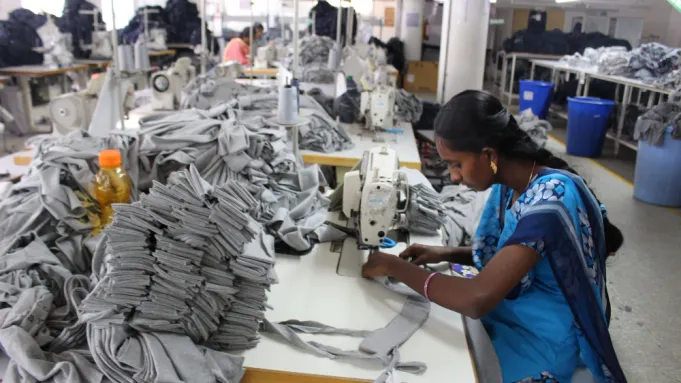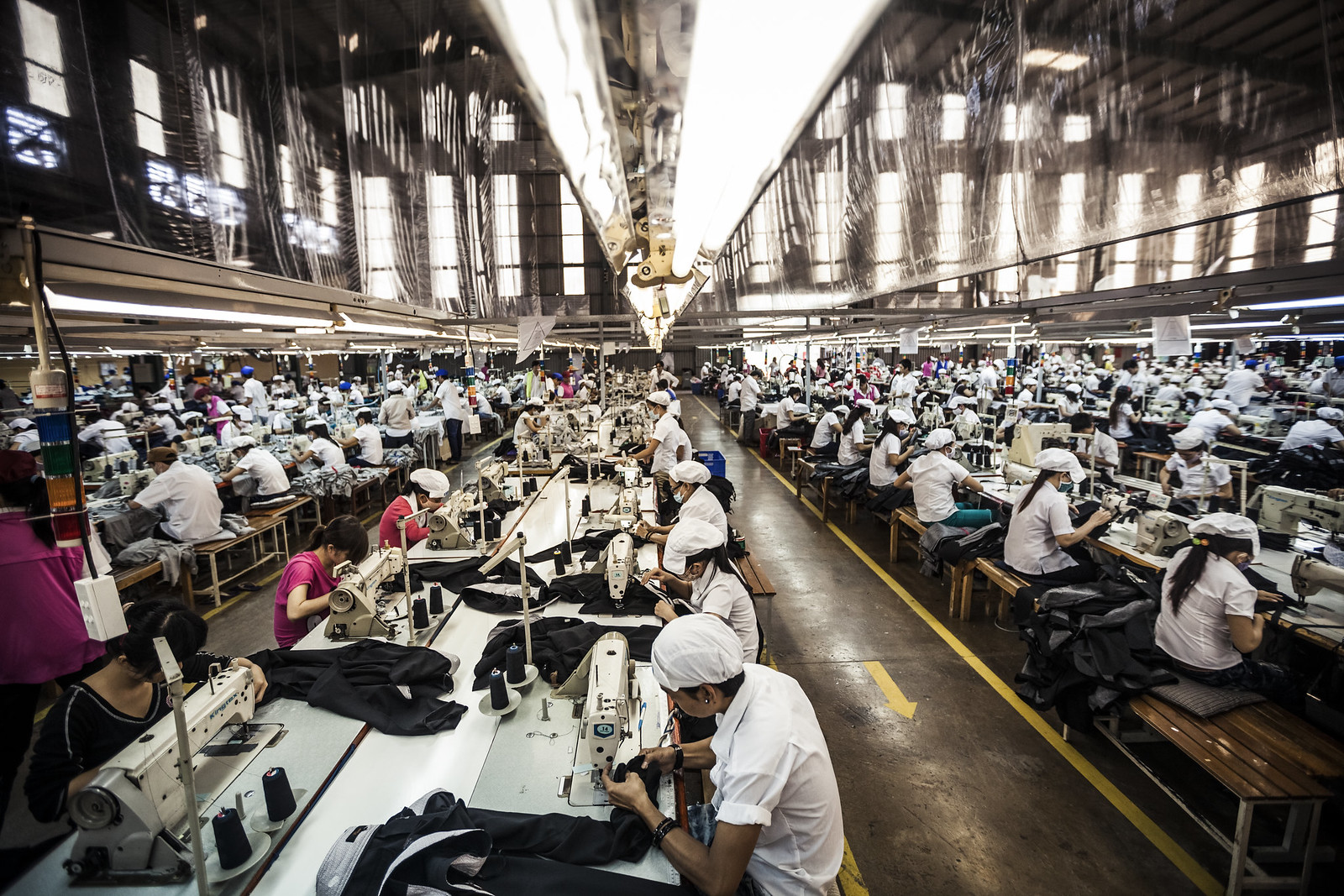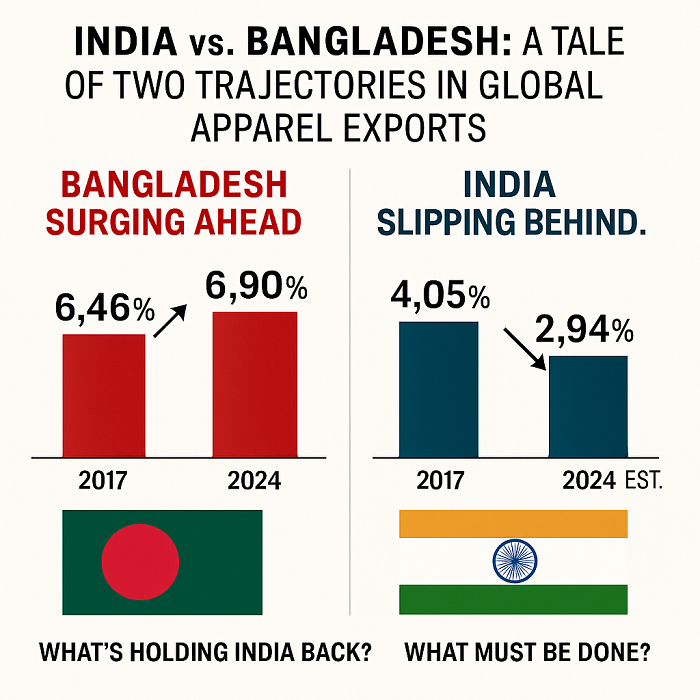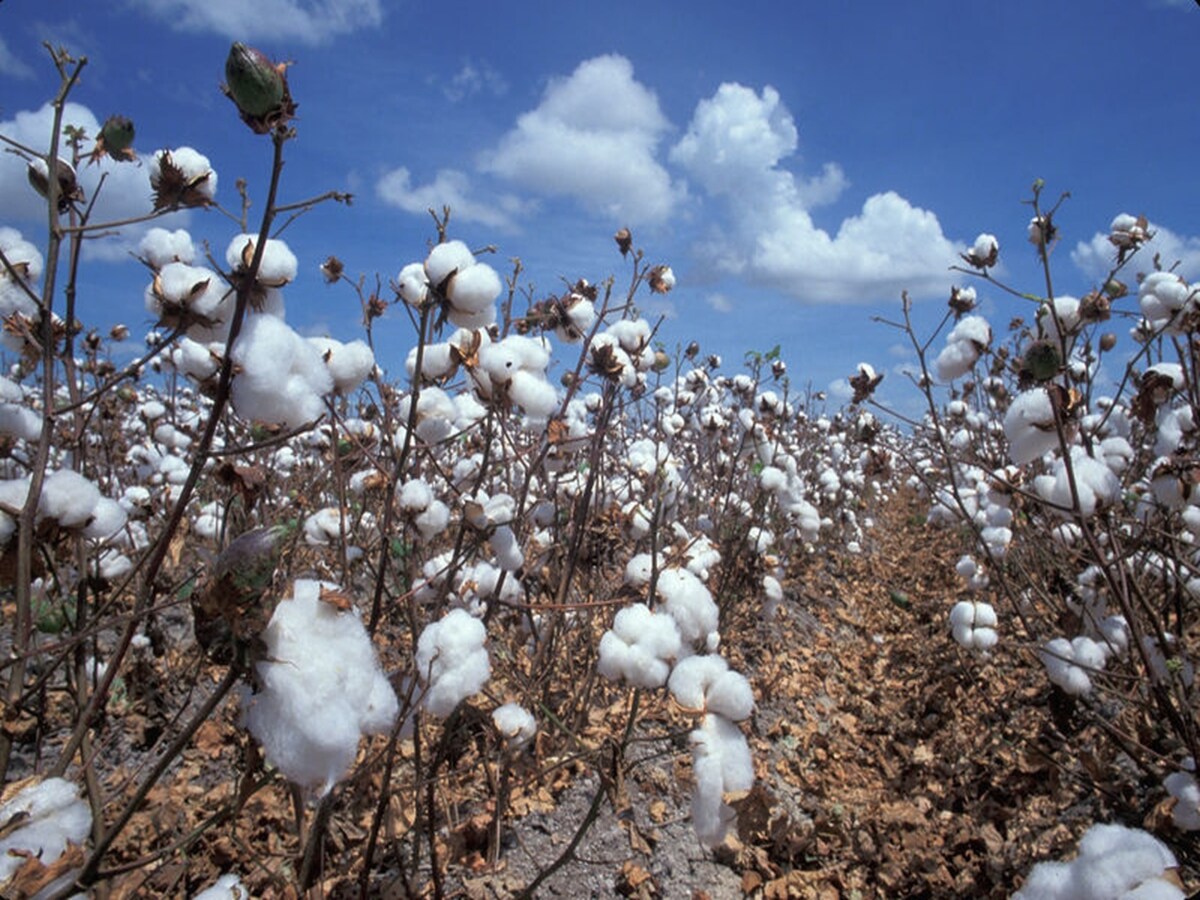
Once a paragon of India’s textile prowess, Tiruppur—the country’s undisputed ‘Knitwear Capital’—is confronting a multi-layered crisis that could unravel decades of industrial growth. While the surface numbers tell a story of booming trade and robust exports, ground realities reveal serious structural flaws threatening the very future of this iconic manufacturing cluster.
As India sets its sights on achieving $100 billion in textile exports, the fate of Tiruppur becomes central to this vision. But unless urgent corrective action is taken, the region could go from a global export engine to a cautionary tale of missed opportunities.
Growth meets ground reality
Tiruppur’s performance in FY25 seems, at first glance, enviable. Knitwear exports reached a record Rs 39,618 crore, up nearly 20 per cent from the previous fiscal year. Domestic consumption added another Rs 30,000 crore to the region’s textile economy. With over 20,000 production units and more than 600,000 direct workers, the cluster’s sheer scale is impressive.
Table: Tiruppur knitwear at a glance
|
Fiscal Year (FY) |
Knitwear exports (Rs cr) |
Growth (%) |
|
2020 |
27,280 |
- |
|
2024 |
33,045 |
21.13% |
|
2025 |
39,618 |
19.89% |
Yet, beneath these numbers lie deep-rooted challenges—outdated machinery, labor shortages, unfair international competition, and policy mismatches—all of which threaten to choke future growth.
What’s holding tiruppur back?
Technology lag and MSME constraints: Despite their critical role in exports, most of Tiruppur’s textile units operate with outdated machinery. Industry estimates indicate at least 50 per cent of capital investment is needed to modernize. Of the 2,500 export units in Tiruppur, nearly 2,400 are MSMEs contributing only half the cluster’s export earnings. While the top 100 exporters have the capital to innovate and expand, the rest struggle to stay afloat in a rapidly evolving global market.
The uneven global playing field: India’s textile exporters face stiff competition from countries like Bangladesh, which enjoy duty-free access to key Western markets as part of their LDC status. Furthermore, these competitors receive more generous state subsidies—on electricity, machinery, and logistics—making their products cheaper and more appealing to international buyers.
Labor woes and rising wage pressures: The industry is experiencing a persistent labor shortage, with an estimated deficit of 100,000 to 150,000 workers. This problem has worsened post-election, as migrant laborers delay or avoid returning to the region. Adding to the challenge, wage levels in Tiruppur range from Rs 15,000 to Rs 18,000 per month—nearly double that of competitors like Bangladesh, where wages can be as low as Rs 8,000. This cost burden erodes price competitiveness on the global stage.
Infrastructure limitations disincentivize buyers: Tiruppur lacks direct international air connectivity. Global buyers from markets like New York or London must fly into Chennai or Bengaluru, then travel hours by road to reach Tiruppur. The absence of seamless logistics not only adds time and cost but also reduces the frequency of factory visits and increases dependency on middlemen.
Government schemes falling short
Despite a slew of government initiatives, tangible benefits for Tiruppur’s MSMEs remain limited. For example, the National Technical Textiles Mission has seen only Rs 509 crore spent out of Rs 1,480 crore as of January 2025. The Technology Upgradation Fund Scheme (TUFS) remains dormant, with no updates since March 2022. The PLI Scheme targets large-scale MMF producers, excluding most of Tiruppur’s cotton-centric MSMEs due to its high Rs 100 crore investment threshold. These gaps in policy design and execution leave smaller players stranded, with little incentive or means to modernize.
Charting a new course
To keep Tiruppur from slipping into stagnation, a comprehensive, region-focused strategy is imperative.
To begin with it needs MSME-focused technology upgradation scheme. That means, a revamped TUFS tailored to MSMEs is essential—one that provides credit-linked subsidies, reduced collateral requirements, and easy access to machinery finance. Without this, modernization will remain a pipe dream for smaller units.
It needs aggregation and workforce development. Encouraging cluster-based approaches—such as MSME cooperatives and producer groups—can help smaller units pool resources, bargain better, and access new markets. Simultaneously, dedicated skill centers should be set up within Tiruppur to create a steady supply of trained labor aligned with market needs.
Tiruppur also needs either a direct international airport or an overhauled Coimbatore airport with faster last-mile road and rail connectivity. Such upgrades would drastically improve buyer access and improve global confidence. Meanwhile India must negotiate bilateral trade agreements that replicate the benefits LDCs enjoy in key markets. Additionally, subsidies for energy, digitalization, and sustainable practices will help Tiruppur compete more equitably with its international peers.
Moreover, financial literacy, digital adoption, and corporate governance training for MSMEs can unlock new funding avenues and improve transparency. Special loan windows with low-interest rates and longer tenures can empower these businesses to scale.
Why Tiruppur matters to India’s textile dream
Tiruppur isn’t just a local success story—it’s a national strategic asset. Contributing 90 per cent of India’s cotton knitwear exports, it plays a critical role in India’s journey toward a $100 billion textile export target. But this trajectory is not guaranteed. With aging machinery, rising costs, and global headwinds, Tiruppur's competitive advantage is fraying. The next five years will be crucial—not just for the cluster’s survival, but for the credibility of India's textile policy itself.
In this race against time, India must stitch together a policy fabric that supports scale, sustainability, and inclusive growth. Only then can Tiruppur retain its crown—and help India become a true global leader in apparel and textiles.











